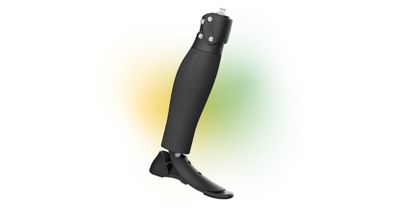-
-
Access Free Student Software
Ansys empowers the next generation of engineers
Students get free access to world-class simulation software.
-
Connect with Ansys Now!
Design your future
Connect with Ansys to explore how simulation can power your next breakthrough.
Countries & Regions
Free Trials
Products & Services
Learn
About
Back
Products & Services
Back
Learn
Ansys empowers the next generation of engineers
Students get free access to world-class simulation software.
Back
About
Design your future
Connect with Ansys to explore how simulation can power your next breakthrough.
Free Trials
Ansys Medical Device Engineering Simulation
In Silico Medical Device Development
In silico approaches, powered by physics-based simulation, enable the medical device industry to accelerate innovation, dramatically reduce cost, shorten the regulatory approval process and maximize patient safety.
Accelerating Medical Device Innovation with Engineering Simulation
Whether lifesaving or improving quality of life, medical devices need to withstand the harsh conditions of the human body while operating as intended throughout their intended lifetime and without interfering with normal bodily functions. Ansys, part of Synopsys, provides the in silico technologies needed, such as computational modeling and simulation (CM&S), artificial intelligence (AI), and digital twins, to help the medical device industry bring safe, innovative devices to patients. By virtually testing devices, medical device manufacturers can iterate and optimize designs and determine how they will interact within the human body while testing for biocompatibility, MRI safety, fatigue performance, blood damage, and more.

Validated Medical Devices
Accurate modeling of the complexities of human and animal physiology can validate a medical device's performance in its working environment.
In Silico Clinical Trials
Applying validated computer models of medical devices to hundreds or thousands of virtual patients provides complementary evidence of product performance for a more robust regulatory approval submission.
Biocompatibility Testing
Multiphysics modeling enables medical device manufacturers to test Class II and III devices for biocompatibility, ensuring patient safety and providing evidence for regulatory approval.
Personalized Medicine
In silico technologies are paving the way for personalized medicine, enabling individualized treatments rather than a one-size-fits-all approach.
Fighting Cardiovascular Diseases with In Silico Solutions
Applications
Simulation provides a transformative approach that minimizes development risks and expenses across various health applications. With virtual testing, manufacturers can identify design flaws early, reducing reliance on costly physical prototypes and extensive testing phases.
Featured Solutions
Real-World Simulation in Action
Below is a curated list of success stories and thought leadership from our colleagues, customers, and partners around the world using simulation to advance medical devices.
Let’s Get Started
If you're facing engineering challenges, our team is here to assist. With a wealth of experience and a commitment to innovation, we invite you to reach out to us. Let's collaborate to turn your engineering obstacles into opportunities for growth and success. Contact us today to start the conversation.









